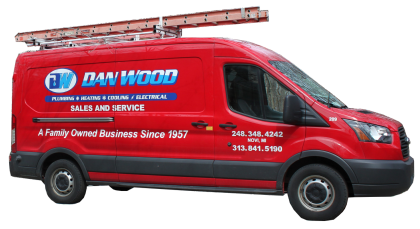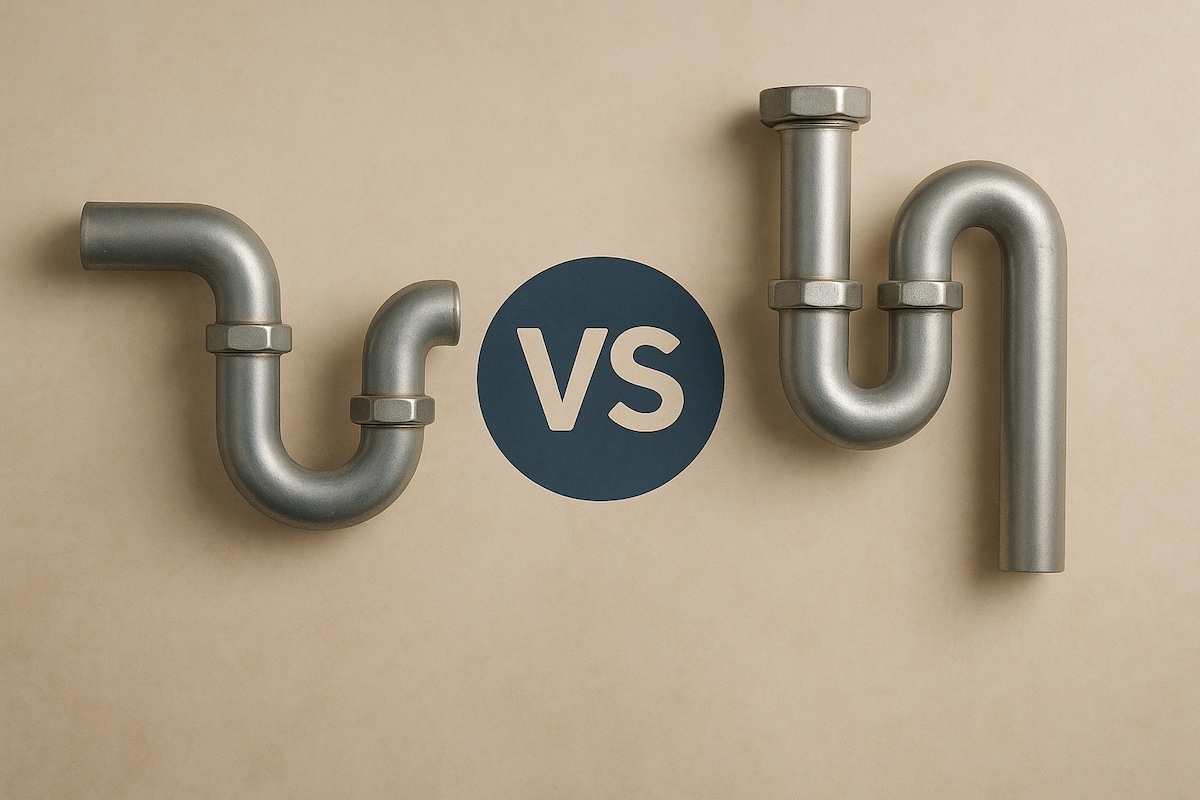If you’ve ever peeked under your sink or behind your toilet, you’ve likely noticed a curved piece of pipe. That bend isn’t just random design, it’s a critical part of your plumbing system called a trap. Plumbing traps are designed to keep your home safe from foul sewer gases by holding a small amount of water in the curve, which acts as a barrier.
Among the most common traps you’ll hear about are the S-trap and the P-trap. While they may look similar at first glance, these two serve slightly different purposes, and one is far more common in modern plumbing. Understanding the differences can help homeowners and property managers make the right choices during installations, repairs, or remodels.
In this guide, we’ll break down what S-traps and P-traps are, how they work, their pros and cons, and which one is right for your home.
What Is a Plumbing Trap?
A plumbing trap is a curved pipe found beneath sinks, bathtubs, and toilets. Its main function is simple yet essential:
- Water Seal Barrier: The trap holds a small amount of water at all times. This water creates a seal that prevents sewer gases from escaping into your home.
- Catch for Debris: It can also catch small objects (like rings or hair) before they enter the main drain, making them retrievable.
- Health and Safety: Without traps, your home could quickly fill with dangerous and unpleasant odors.
What Is an S-Trap?
An S-trap is shaped like the letter “S” when viewed from the side. It connects your plumbing fixture directly to the floor drain.
How It Works
The water in the curve blocks gases from entering the room. As water flows, it flushes through the trap into the floor waste pipe.
Where It’s Commonly Found
- Older homes (built before stricter plumbing codes were introduced)
- Floor-mounted toilets
- Some regions where traditional construction practices still use them
Advantages of S-Traps
- Simple design that was once widely used
- Works well for floor-mounted toilets
Drawbacks of S-Traps
- Prone to Siphonage: Because of their shape, water in the trap can sometimes be unintentionally sucked out, breaking the water seal. This allows gases to escape.
- Code Restrictions: In many areas, building codes no longer permit S-traps. They’ve largely been replaced with P-traps or other modern alternatives.
- Harder to Maintain: They can be more challenging to clean and are more prone to issues with odor control.
What Is a P-Trap?
A P-trap looks like the letter “P” lying on its side. Unlike the S-trap, it connects your plumbing fixture to the wall drain, not the floor.
How It Works
Water sits in the bottom curve of the “P.” As water drains, the trap allows wastewater to exit while maintaining enough water in the bend to prevent gases from escaping.
Where It’s Commonly Found
- Kitchen sinks
- Bathroom sinks
- Wall-mounted toilets
- Modern plumbing systems across the world
Advantages of P-Traps
- Code-Compliant: Most building codes now require P-traps.
- Reliable Water Seal: Less prone to siphoning compared to S-traps.
- Easy to Clean: Most modern P-traps are designed with access points for cleaning out debris.
- Flexible Design: Can be easily connected to wall drains in modern homes.
Limitations of P-Traps
- Requires wall drainage. If your bathroom or kitchen is designed for floor drainage, conversion may require extra work.
- Slightly more space is needed under sinks compared to some older trap designs.
Key Differences Between S-Trap and P-Trap
Shape and Design
- S-Trap: Curved like an “S,” drops into the floor drain.
- P-Trap: Curved like a sideways “P,” connects to wall drain.
Installation Position
- S-Trap: Suited for floor-mounted systems.
- P-Trap: Suited for wall-mounted systems and sinks.
Suitability in Modern Plumbing
- S-Trap: Becoming obsolete, restricted in many regions.
- P-Trap: Standard in modern installations, required by codes.
Maintenance and Issues
- S-Trap: Higher risk of losing the water seal and releasing odor.
- P-Trap: Easier to maintain, less likely to fail.
Code Compliance
- S-Trap: Often non-compliant with modern codes.
- P-Trap: Universally accepted and required in most places.
Which Trap Should You Use?
If you’re building or remodeling a home, the choice is almost always the P-trap. It’s safer, more reliable, easier to maintain, and compliant with plumbing codes.
That said, if you own an older property that has S-traps installed, you may need to convert them to P-traps during renovation to stay compliant. This usually involves reworking the drainage line to connect to the wall rather than the floor. While it’s an extra step, it’s worth the effort for both safety and peace of mind.
Pros and Cons at a Glance
| Feature | S-Trap | P-Trap |
|---|---|---|
| Shape | “S” shaped, floor-mounted | “P” shaped, wall-mounted |
| Code Compliance | Often restricted/outdated | Fully code-compliant |
| Siphonage Risk | High | Low |
| Ease of Cleaning | Difficult | Easier, many with a clean-out port |
| Modern Usage | Rare, older homes | Standard in modern plumbing |
FAQs
What is the main purpose of a plumbing trap?
The main purpose of a plumbing trap is to hold water that acts as a seal, preventing sewer gases from entering your home and keeping the environment safe and odor-free.
Why are S-traps no longer recommended?
S-traps are more likely to siphon out the water seal, making them unreliable. This can lead to sewer gases entering the home, which is why modern codes discourage or prohibit them.
Can I convert an S-trap to a P-trap?
Yes, but it requires redirecting the drainage to a wall connection instead of the floor. A licensed plumber can handle the conversion safely and ensure compliance with local building codes.
Which is better for toilets: S-trap or P-trap?
For older, floor-mounted toilets, S-traps may still be in use. However, P-traps are considered better, more reliable, and are the current standard for modern toilets.
Are P-traps required by plumbing code?
Yes, in most regions, P-traps are required by code because of their safety, efficiency, and reliability.
Conclusion
When comparing S-traps vs P-traps, the difference comes down to safety, reliability, and compliance. While S-traps may still be found in older homes, they’re increasingly considered outdated and less effective. P-traps, on the other hand, have become the universal standard thanks to their superior design, ability to maintain a water seal, and compliance with modern building codes.
At Dan Wood Services, we’ve seen firsthand how important the right plumbing setup is for keeping homes safe and functional. Whether you’re dealing with an old S-trap that needs replacing or looking to install new plumbing fixtures with a P-trap, our experienced team can help. We specialize in plumbing services that bring your home up to modern standards, ensuring long-term reliability and comfort.
If you’re ready to upgrade your plumbing or need expert advice on traps and fixtures, reach out to us at Dan Wood Services. We’re here to make sure your home’s plumbing system runs smoothly and safely because your comfort and peace of mind are our top priority.




